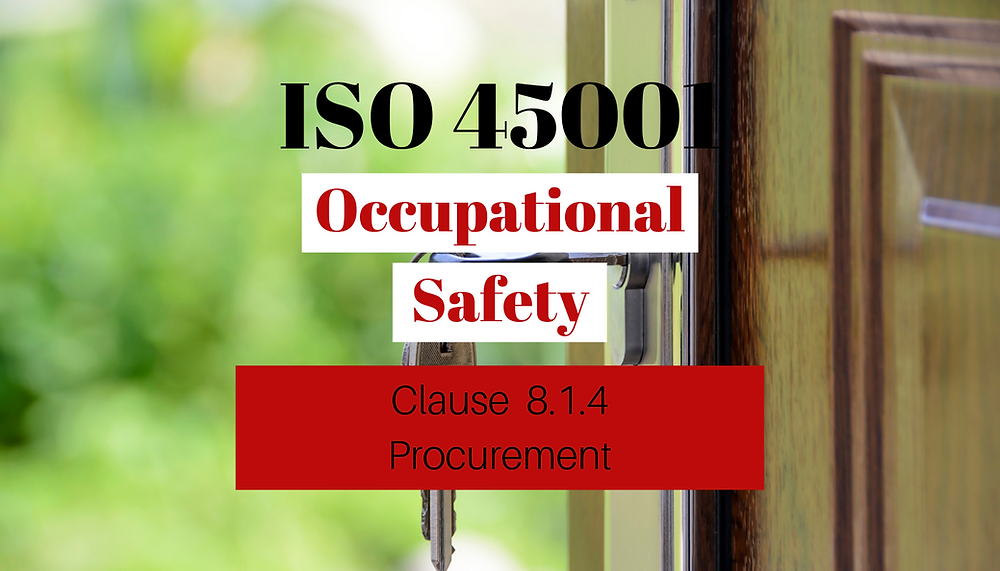Understanding iso 45011 clause 8.1.4

In the realm of Occupational Health and Safety (OH&S), businesses worldwide are increasingly turning to the iso 45011 clause 8.1.4 standard to enhance their safety measures and safeguard their workforce. When exploring the intricacies of iso 45011 clause 8.1.4, it’s crucial to dissect key clauses that form its backbone. In this post, we’ll deconstruct Clause 8.1.4, a vital segment that concerns an organization’s operational planning and control.
The Purpose of iso 45011 clause 8.1.4
ISO 45001 Clause 8.1.4 is designed to ensure that OH&S risks and opportunities arising from an organization’s operational planning and control are addressed systematically. This clause is about managing the process of identifying hazards and assessing and controlling risks associated with an organization’s operation. It emphasizes the need for a proactive approach to safety, one where hazards are anticipated and addressed before they can cause harm.
Establishing the Context
iso 45011 clause 8.1.4 isn’t something you just glance at during an audit—it’s integral to the entire fabric of iso 45011 clause 8.1.4. Here, an organization needs to understand the context in which it operates. This begins with defining its scope and determining the OH&S risks and opportunities that are within that scope.
Defining the Scope
Before an organization can effectively implement an OH&S management system (OH&SMS), it must first define its scope. This encompasses all the aspects and impacts related to its operations, including the services it provides and its OH&S risks and opportunities.
Identifying Risks and Opportunities
Once the scope is set, the next step is to identify potential hazards and assess the associated risks and opportunities. This can involve a systematic approach such as thorough job safety analyses, reviewing historical incident data, or conducting surveys and audits.
Planning for Risk Reduction
Planning is the key to success. Under iso 45011 clause 8.1.4, organizations need to develop a framework for identifying and prioritizing the specific risks and opportunities that affect their OH&S performance. Once identified, developing plans to mitigate these risks is paramount.
Assess the Depth of Risk
Risk assessment involves considering both the likelihood of an incident occurring and its potential severity. This allows organizations to categorize risks and address the most critical ones first.
Develop Controls
After understanding the risks, organizations must develop and implement controls to manage them. This can involve a range of strategies, from engineering controls and administrative safeguards to Personal Protective Equipment (PPE) and safe work procedures.
Performance Evaluation and Continual Improvement
Monitoring and reviewing the performance of the established controls is a way to ensure their effectiveness. Continual improvement is an essential aspect of iso 45011 clause 8.1.4 and encourages organizations to evolve their safety measures as they gain more insights.
Establish Monitoring Processes
To evaluate performance, organizations need to establish monitoring processes. This could involve regular inspections, safety audits, and reviewing incident reports.
Take Corrective Actions
If performance evaluation reveals that controls are not effective, organizations must take corrective actions to address deficiencies. This can involve revising policies, providing additional training, or implementing new control measures altogether.
Integrating the OH&SMS with Other Business Processes
The OH&SMS under iso 45011 clause 8.1.4 should not operate in a silo. It needs to be integrated with an organization’s broader business processes to ensure that OH&S considerations are taken into account across the board.
Promote an Integrated Approach
Organizations should aim to foster a culture where safety is everyone’s responsibility, not just a concern for the OH&S department. This means training employees at all levels on the importance of safety and integrating safety practices into operational planning.
Consistency in Safety Procedures
Consistency is critical for safety. Establishing standard safety procedures and ensuring they are followed throughout the organization is essential in preventing incidents and maintaining a safe work environment.
Final Thoughts
ISO 45001 Clause 8.1.4 is a comprehensive guide to help organizations integrate safety into their everyday operations. It is a reminder of the importance of proactive planning, continual monitoring, and the incorporation of safety practices into the organizational culture to ensure the well-being of the workforce. By implementing the principles outlined in this clause, businesses can not only meet regulatory requirements but also build a reputation as a safety-conscious employer that places a premium on its employees’ health.



